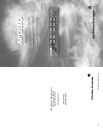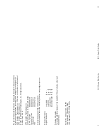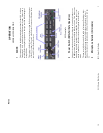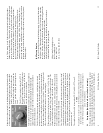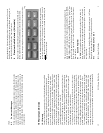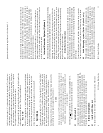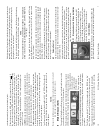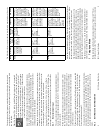
6 SL15-Series Pilot Guide
In SL15 versions above “F” serial number for the top board (2
nd
set of unit se-
rial numbers) a public address function was added. To access this function, a
switch is installed to connect the top connector, pin 18, to ground. This places
the pilot microphone on the speaker output (Pin W) when the PTT is pushed.
The copilot can continue to use the selected com radio.
We recommend that the switch transfer the audio from the cockpit speaker to a
cabin speaker for public address. This will prevent feedback.
4.2 Key “Click”
The SL15 is equipped with a “click” function that provides an aural feedback
to the user in addition to the tactile button push. This sound can be enabled or
disabled by simultaneously holding the COM 1 and COM 2 buttons in for at
least 5 seconds. Any person hearing the radios will also hear the key click.
Allow at least 20 seconds between turning the key click on and off.
5 Split Mode
Turning the rotary switch to COM 1/COM 2 places the SL15 into "Split Mode."
This places the pilot on Com 1 and the copilot on Com 2. An example of this
useful feature is when the pilot may want to talk to Air Traffic Control, while
the copilot may be speaking to Flight Watch. Although this mode has limita-
tions (see below) we believe you will find this to be a useful feature.
Switching to Com 2/Com l will reverse the “Split Mode” radio selection. The
pilot will be on Com 2 and the copilot will be on Com 1.
NOTE
Due to the nature of VHF communications signals, and the size constraints in
general aviation aircraft, it is probable that there will be some bleed-over in
the Split mode, particularly on adjacent frequencies. UPS Aviation
Technologies makes no warranty about the suitability of Split Mode in all
aircraft conditions.
Split Mode does not
turn off other (Nav, ADF, etc.) selected audio to pilot. However,
the copilot will only hear the selected communications receiver.
5.1 Split Mode ICS
In split mode, the pilot and copilot are usually isolated from each other on the
intercom, simultaneously using their respective radios. Depressing the ICS but-
ton in Split Mode will activate VOX intercom between the pilot and copilot
positions. This permits intercommunication when desired between the crew.
Pressing the ICS button again disables this crew intercom function.
6 Intercom Operation
6.1 IntelliVox® VOX-Squelch
No adjustment of the IntelliVox® squelch control is necessary. There is no
11 SL15-Series Pilot Guide
justment located on the top of the unit. See Section 2.5
A three-position switch is used to set the receiver sensitivity and to test the in-
dicator lamps. Use "HI" sensitivity initially. This allows you to hear the outer
marker beacon about a mile out. Then select the “LO” sensitivity to give you a
more accurate location of the Outer Marker. The momentary down switch posi-
tion is marker test, labeled "T/M" and illuminates all three lamps simultane-
ously to assure the lamps (internal and external) are in working order. TST
does not activate MM sense output.
In units with serial numbers above “F” series in the first set of numbers, a
marker mute function was added. Pressing the marker mode select down (to
“T/M”) will cause the marker audio to mute for that beacon. The next beacon
received will re-activate the audio.
9 Internal Recorder System (Optional)
The Intercom Recording System (referred to here as the IRS) is a digital recording
system allowing automatic storage and playback of aircraft radio traffic.
Operating as a continuous loop recorder, (first message received will be the
last heard), the recorder has one minute of recording time or up to 16 mes-
sages. With its own built in VOX circuit, there are no buttons to press to start
recording. The system automatically begins to record the instant the radio be-
comes active. Only aircraft radio audio in pilots headset is recorded and only
the pilot will hear the playback audio.
9.1 Internal Recorder Operation
Recording is automatic; there is no action required by the pilot. To play back
the last recorded message, simply press the momentary switch associated with
the IRS. Each additional press of the button will play the preceding recorded
message. You must wait for the message to finish playing before accessing the
prior message.
To cancel the playback, press and hold the playback button for two seconds.
The next time the button is pressed, the next earlier message will be heard.
9.2 Audio Messaging system (Option 1, Option 2, only)
When this option is installed, the SL15 contains six stored messages. An out-
side annunciator, such as an Electronics International engine gage system trig-
gers these messages. When there is an announcement, it will be repeated every
two seconds until the remote- mounted ACK button is pushed. This stops the
played annunciation, until the next announcement is required (the next falling



